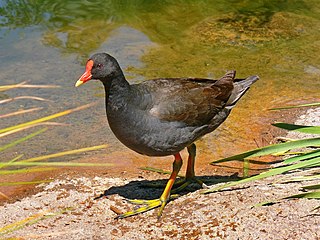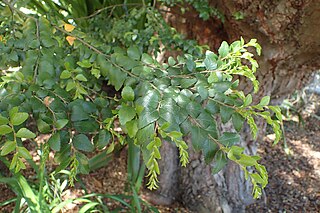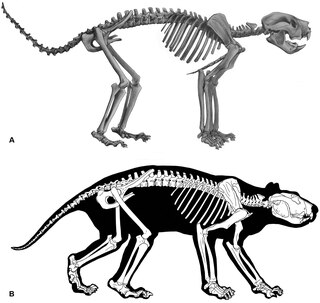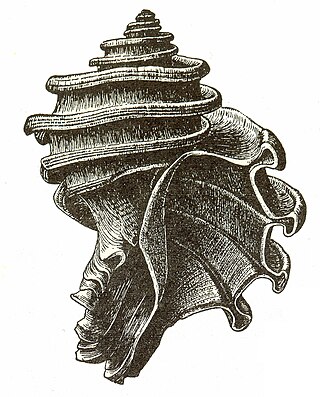
The Anatidae are the biological family of water birds that includes ducks, geese, and swans. The family has a cosmopolitan distribution, occurring on all the world's continents except Antarctica. These birds are adapted for swimming, floating on the water surface, and, in some cases, diving in at least shallow water. The family contains around 174 species in 43 genera.

Rails are a large, cosmopolitan family of small- to medium-sized terrestrial and/or semi-amphibious birds. The family exhibits considerable diversity in its forms, and includes such ubiquitous species as the crakes, coots, and gallinule; other rail species are extremely rare or endangered. Many are associated with wetland habitats, some being semi-aquatic like waterfowl, but many more are wading birds or shorebirds. The ideal rail habitats are marsh areas, including rice paddies, and flooded fields or open forest. They are especially fond of dense vegetation for nesting. The rail family is found in every terrestrial habitat with the exception of dry desert, polar or freezing regions, and alpine areas. Members of Rallidae occur on every continent except Antarctica. Numerous unique island species are known.

Larus is a large genus of gulls with worldwide distribution.

Tringa is a genus of waders, containing the shanks and tattlers. The genus name Tringa is the Neo-Latin name given to the green sandpiper by the Italian naturalist Ulisse Aldrovandi in 1599. They are mainly freshwater birds, often with brightly coloured legs as reflected in the English names of six species, as well as the specific names of two of these and the green sandpiper. They are typically associated with northern hemisphere temperate regions for breeding. Some of this group—notably the green sandpiper—nest in trees, using the old nests of other birds, usually thrushes.

The Lacertidae are the family of the wall lizards, true lizards, or sometimes simply lacertas, which are native to Afro-Eurasia. It is a diverse family with at about 360 species in 39 genera. They represent the dominant group of reptiles found in Europe.

Anas is a genus of dabbling ducks. It includes the pintails, most teals, and the mallard and its close relatives. It formerly included additional species but following the publication of a molecular phylogenetic study in 2009 the genus was split into four separate genera. The genus now contains 31 living species. The name Anas is the Latin for "duck".

Nothofagus, also known as the southern beeches, is a genus of 43 species of trees and shrubs native to the Southern Hemisphere in southern South America and east and southeast Australia, New Zealand, New Guinea, and New Caledonia. The species are ecological dominants in many temperate forests in these regions. Some species are reportedly naturalised in Germany and Great Britain. The genus has a rich fossil record of leaves, cupules, and pollen, with fossils extending into the late Cretaceous period and occurring in Australia, New Zealand, Antarctica, and South America.

Squalodon is an extinct genus of whales of the Oligocene and Miocene epochs, belonging to the family Squalodontidae. Named by Jean-Pierre Sylvestre de Grateloup in 1840, it was originally believed to be an iguanodontid dinosaur but has since been reclassified. The name Squalodon comes from Squalus, a genus of shark. As a result, its name means "shark tooth". Its closest modern relative is the South Asian river dolphin.

Thylacoleonidae is a family of extinct carnivorous diprotodontian marsupials from Australia, referred to as marsupial lions. The best known is Thylacoleo carnifex, also called the marsupial lion. The clade ranged from the Late Oligocene to the Late Pleistocene, with some earlier species the size of a possum, while the youngest members of the family belonging to the genus Thylacoleo reached sizes comparable to living big cats.

Borhyaenidae is an extinct metatherian family of low-slung, heavily built predatory mammals in the order Sparassodonta. Borhyaenids are not true marsupials, but members of a sister taxon, Sparassodonta. Like most metatherians, borhyaenids and other sparassodonts are thought to have had a pouch to carry their offspring around. Borhyaenids had strong and powerful jaws, like those of the unrelated placentalians Hyaenodon and Andrewsarchus, for crushing bones. Borhyaenids grew up to an average of 5 to 6 feet long.

Scomber is a genus of fish in the family Scombridae living in the open ocean found in Atlantic, Indian and Pacific Ocean. The genus Scomber and the genus Rastrelliger comprise the tribe Scombrini, known as the "true mackerels". These fishes have an elongated body, highly streamlined, muscular and agile. The eyes are large, the head is elongated, with a big mouth provided with teeth. They have two triangular dorsal fins, with some stabilizing fins along the caudal peduncle. The basic color is blue-green with a silvery white belly and a darker back, usually black mottled.

Phocinae is a subfamily of Phocidae whose distribution is found in the seas surrounding the Holarctic, with the Baikal seal being the world's only freshwater species of pinniped. What distinguishes them from other phocid seals is the presence of well-developed claws on their front and back flippers. The Phocinae is divided into three extant tribes: Erignathini, Cystophorini, and Phocini. Members of both Erignathini and Cystophorini have 34 chromosomes, while species in the tribe Phocini have 32 chromosomes.

Metaxytherium is an extinct genus of dugong that lived from the Oligocene until the end of the Pliocene. Fossil remains have been found in Africa, Europe, North America and South America. Generally marine seagrass specialists, they inhabited the warm and shallow waters of the Paratethys, Mediterranean, Caribbean Sea and Pacific coastline. American species of Metaxytherium are considered to be ancestral to the North Pacific family Hydrodamalinae, which includes the giant Steller's sea cow.

Aktiogavialis is an extinct genus of crocodylian that lived from the Oligocene until the Miocene in what is now the Caribbean. Two species have been described: Aktiogavialis puertoricensis from the Middle Oligocene of Puerto Rico and Aktiogavialis caribesi from the Huayquerian of the Late Miocene of Venezuela.

Pelophylax is a genus of true frogs widespread in Eurasia, with a few species ranging into northern Africa. This genus was erected by Leopold Fitzinger in 1843 to accommodate the green frogs of the Old World, which he considered distinct from the brown pond frogs of Carl Linnaeus' genus Rana.

Ecphora is the common name for a group of extinct predatory marine gastropod mollusks within the family Muricidae, the rocks snails or murexes. The common name is based on the first officially described genus, Ecphora. The entire lineage of these ocenebrinid murexes are descended from the Eocene murex, Tritonopsis. Ecphoras were indigenous to the North American Eastern Seaboard, being found in marine strata from the Late Eocene until their extinction during the Pliocene. Many ecphora species are important index fossils.
The Macropodidae are an extant family of marsupial with the distinction of the ability to move bipedally on the hind legs, sometimes by jumping, as well as quadrupedally. They are herbivores, but some fossil genera like Ekaltadeta are hypothesised to have been carnivores. The taxonomic affiliations within the family and with other groups of marsupials is still in flux.
Monotherium is an extinct genus of phocid belonging to the subfamily Monachinae. It is known from fossils found in the middle to late Miocene of Belgium.
Notocetus is an extinct genus of river dolphin belonging to Squalodelphinidae. Known specimens have been found in Early Miocene marine deposits from Argentina, Italy and Peru.



















